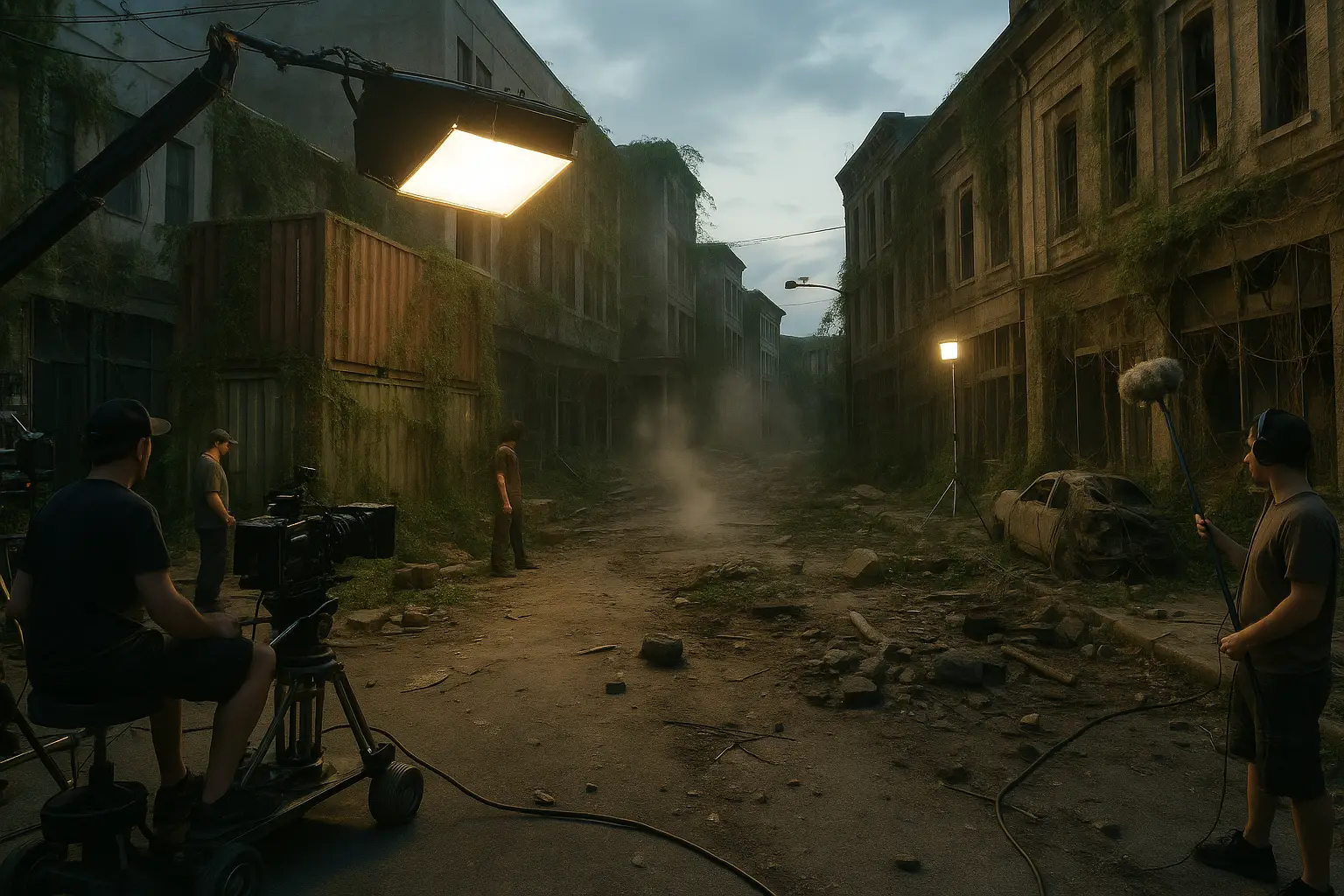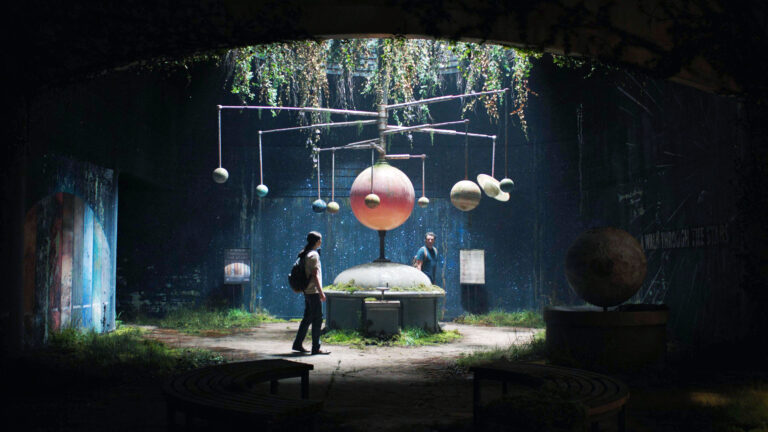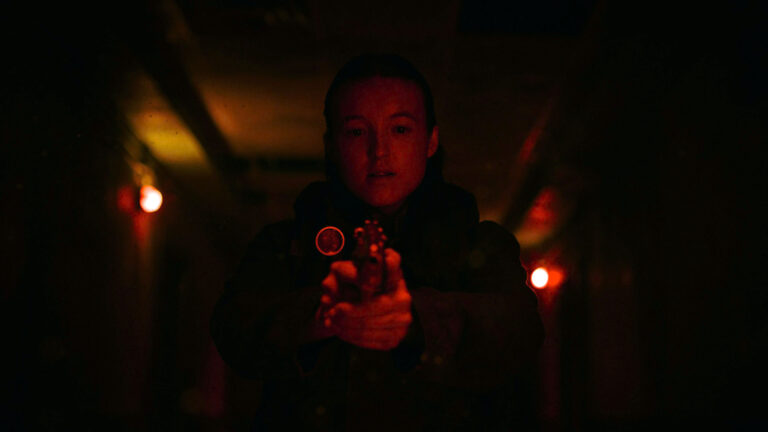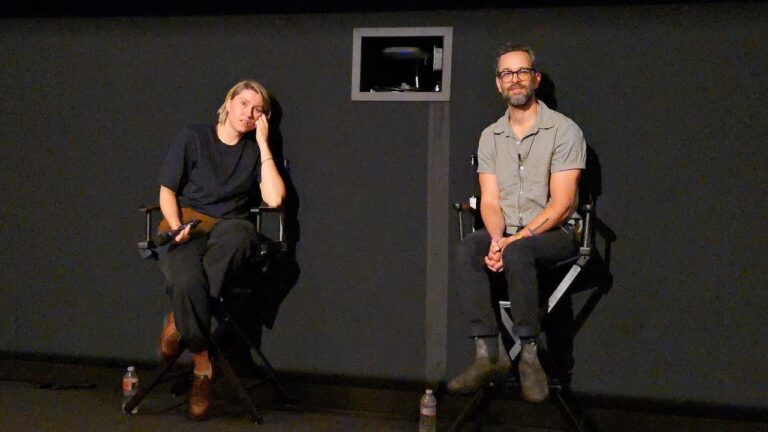If you’ve stared at a moss – choked skyscraper in The Last of Us and thought, “Wow, did they really nuke Boston for this show?”—congrats, you’ve fallen under John Paino’s spell. This guy doesn’t just build sets; he crafts archaeological poetry. Paino, the series’ production designer, turns Alberta’s very normal cities into decaying mazes you wouldn’t walk through at noon with a flamethrower. And he does it with the flair of someone who once described his own job as “ruin pornographer.” That’s not a job title you master overnight.
Who Is John Paino and Why Should We Care?
First, the basics. Paino cut his teeth in HBO territory – think Big Little Lies, Sharp Objects, and a love affair with beautifully shattered spaces. But when The Last of Us rolled into production, Paino took one look at Alberta’s untouched landscape and chose violence. Artistic, fungal, spectacular violence. Here’s the kicker: Paino believes each ruined brick, each slouched sofa, should have a backstory. He always asks, “What happened in year five, year ten, or even twenty?” And then he answers with layers of debris.
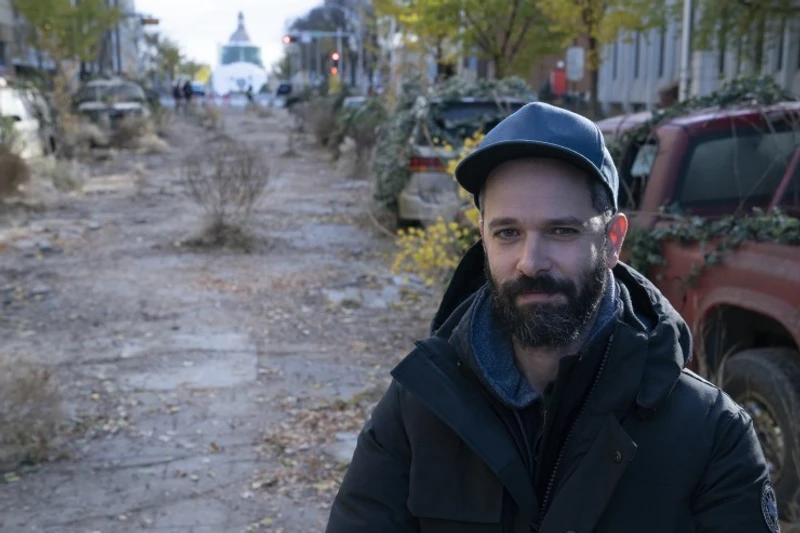
His vision? Never let a street look destroyed just for fun. Ugly with a purpose, folks. And honestly, it’s the emotional honesty slinking through every shattered wall that makes this show hit bone – deep.
Boston by Way of Calgary – Shipping Containers and Sprayed – On Kudzu
Let’s start where the show does – the Boston QZ. But don’t go looking for it in Massachusetts. Those are actually two Calgary city blocks and a brick – laden stretch near the Alberta Legislature in Edmonton. Paino didn’t settle for “close enough.” He and his crew stacked a whopping 60 shipping containers – each daubed with a rough concrete skim to mimic FEDRA’s quick – and – dirty construction methods.
Edmonton’s iconic Legislature got a Chernobyl – style makeover, too. Paino’s team draped it with 300 live vines, zip – tied and then misted with glycerin for that dangerous, glossy look. No digital plant life here; every leaf risked Alberta’s dry wind.
The roads? Art department jackhammered, then filled cracks with latex for ultra – HD prettiness. Authenticity’s price wasn’t cheap: one four – day shoot in downtown Edmonton cost more than $372,000. For fans playing detective, yes, that’s all in CBC’s public budget records.
Turning Kansas City Into an Apocalyptic Warzone – Hopper, Hitchcock, and Real Flames
Of course, we need that one set piece where everything goes off the rails, fast. Kansas City is where Paino and crew turned it up a notch – actually, more like 13. They built a whole fake suburb right beside the Calgary Film Centre. Not joking. Thirteen houses, each with pop – off walls to fit massive cameras and frantic actors.
Fresh asphalt went down, so the armored truck could tear up the streets. Didn’t feel authentic enough? Paino’s team brought in over 50 battered cars, some wired for explosions and driven by stunt drivers who, by all reports, smiled through the mayhem. The sniper’s nest? That’s an Edward Hopper painting mashed with Hitchcock’s “Psycho” house – three stories of dread.
Nine weeks of prep. Then? One week of night shoots where fire, bullets, and a tank of propane melted half the facades. Paino told The Hollywood Reporter, “When you’re burning the place you just built, the art department cries while the stunt guys cheer.” Sounds about right.
Bill & Frank’s Lincoln – The Softest Spot in a Sharpened World
Paino found High River’s abandoned Beachwood neighborhood – a casualty of a real 2013 flood – just waiting for its post – pandemic closeup. Why start from scratch when you can let time do the work? Paino’s approach: layer on neglect, then salt it with beauty.
His team spent as long as twelve weeks prepping the area. They carted in mature shrubs from Vancouver, replanted them, and then let the prairie sun do its work. Most of the interiors had no roofs; the sky and rafters later got the VFX treatment. Paino even grew a real strawberry patch for Frank’s heart – clutching garden moments, misting the fruit with sugar water before each take so it’d pop onscreen.
Stray fact: Deer ate the set – dressing strawberries. Twice. Nature is chaos, people.
Jackson, Wyoming – Canmore Becomes Cozy Without Losing Any Grit
Then comes Jackson. Well, Canmore, Alberta, actually, which transforms into the only place in America where folk music and modern plumbing coexist. Paino and his army raised a thirty – foot log wall on 8th Street, using actual hand – scored logs for that lived – in feel.
The town’s greenhouse? Hockey – arena plexiglass, please and thank you. Inside the Wainwright Hotel, Paino swapped in cedar ceiling panels to warm up the 1990s – vibe lobby. Best detail: the barn doors. Paino hand – scuffed each plank. Locals noticed. Canmore’s tourism board even credited Paino’s fake snow and post – apocalyptic clutter for a fifty – four percent winter uptick.
Retail Ruins – Ellie and Riley Take Northland Village Mall
Few mall montages feel this raw. For the episode “Left Behind,” Paino’s team invaded Calgary’s recently shuttered Northland Village Mall. They didn’t just slap up cardboard cutouts. They built 20 to 25 full storefronts, most branded – yes, Foot Locker, Claire’s, and Victoria’s Secret all ponied up for logo shots.
The centerpiece? A glorious 1941 Allan Herschell Company carousel, shipped from Chinook, Alberta, then customized. Half the panels were swapped out for hallucinatory pastel ones, echoing Ellie’s wide – eyed wonder. The infected fungus in the food court? Paino cooked it up from layers of foam latex, Spanish moss, and a dusting of cocoa powder.
Oh – and every neon sign flickered in time with the actual soundtrack, because Paino is just that extra.
A Short Love Letter to Calgary’s Barron Building
Not every building needs a full makeover. Sometimes Calgary’s midcentury Barron Building asked for little more than broken – glass decals and a dust mop. In 2022, the show dressed up its raw, open floors for downtown chaos. The city had planned renovations anyway, just not quite with so much atmospheric despair.
Every Fungus Grows with a Toolkit – Paino’s Secret Weapons
If you’re itching to recreate this look for your next haunted house, here’s Paino’s unofficial checklist:
- Fungal ropes: Silicone mixed with cellulose insulation, stretched and snarled.
- Dead leaves: Gathered in autumn, then frozen for off – season shoots.
- Vintage office junk: Sourced straight from Calgary’s landfills.
- Timelines everywhere: Even a faded 2003 Patriots sticker made it onto a Boston lamp post.
- 200 craftspeople, artists, and fabricators on deck, with a $30 – million local budget – making The Last of Us a gift that kept on giving to Alberta’s economy.
Looking Ahead – Seattle and Everything That Will Rot
Of course, John Paino doesn’t sleep. He started work on Season 2 locations as early as spring 2025. Reports from The Hollywood Reporter confirm a migration west. His team’s building the WLF stadium in British Columbia, splitting set builds between Vancouver’s BC Place and cavernous Surrey parking lots. Concept art for the Seraphite island hints at Port Moody wharves made wild with barnacles and blown – out windows.
Paino told the trade press in May: “Take a nice view. Then ask what would rot first.” That’s his whole genius, right there.
The Moldy Little Details That Keep Us Watching
Sure, you remember Ellie, Joel, and maybe even Bill’s trumpet solo in Episode 3. But think about those little background flourishes: a 1990s soda can, a single moss – threaded swing set, or that mildewed Walkman hanging in the corner. Each one got argued over, placed, and aged by hand.
So next Sunday, if you spot yet another perfect layer of grime behind Joel’s battered boots, know it didn’t happen by accident. Somewhere, probably at some absurd hour, John Paino and his team debated moss varieties, street layouts, and just how much hope to smuggle into every ruin. That’s what makes their world uncomfortably, heartbreakingly real.
And honestly, in a world stuffed with digital fakery, it doesn’t take a clicker to know – sometimes practical, artisanal rot just feels most alive.

